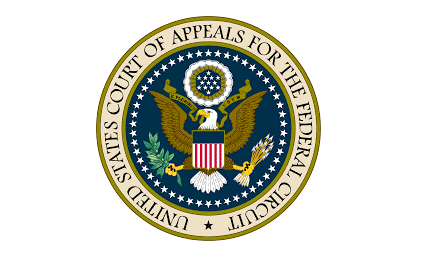The Patent Application Process
Search
A search of U.S and foreign patent databases is ordinarily done to discover documents that are relevant to the patentability of the invention. Based upon the results of the research, we evaluate the likelihood of obtaining a patent on your invention, and provide a written report of the search and our opinion.
Patent Application
The application thoroughly describes and claims the invention. The description of the invention must be sufficient to enable a person skilled in the pertinent technology to make or perform the invention. Claims are provided at the end of the application to define the scope of protection afforded by the patent. Each claim is one sentence that describes the invention but does not cover or describe the prior art. Typically, the claims describe a combination of features of the invention, and that combination of features must be novel and non-obvious in view of the prior art. Once the application is completed to both your satisfaction and ours, we file it in the US Patent and Trademark Office (USPTO). Other formal papers and drawings must be filed with the application.
Prosecution of Application
Each non-provisional patent application filed in the USPTO is submitted to a patent examiner for consideration. The examiner searches issued US and foreign patents, and sometimes searches other non-patent literature as well. The examiner studies the application to determine whether, in light of the prior art found in the search, a patentable invention is claimed. Often, the examiner initially rejects the claims submitted in the patent application, and states his reasons for doing so in a document called an “Office Action.” We will send you a copy of the Office Action, along with our explanation of the examiner’s rejections. It is for you to decide whether to continue the prosecution of the application after a rejection. If you decide to continue, we prepare a written response called an “Amendment” that explains why the invention is patentable over the prior art. The Amendment might also revise the claims. The back-and-forth Office Action and Amendment procedure is called the “prosecution” of the application. Prosecution continues until the examiner allows the claims or makes a final rejection of the claims.
We might receive a telephone call from an Examiner regarding certain minor amendments that may be necessary, or other small matters that must be attended to immediately in order to preserve your application. Because of the type or immediacy of these actions, we may not contact you before taking what we believe to be the appropriate action.
Close of Prosecution
If the examiner issues a final rejection and does not allow any claims, then either the decision can be appealed or a continuation application can be filed. A continuation application is identical to the original application except that the claims are changed. Filing a continuation application may be the appropriate course of action when new and significantly different claims can be presented. When an appeal is filed, it is first considered by the Board of Patent Appeals. If the decision of the Board is not favorable, then the Board’s decision can be appealed to either the US District Court in Washington DC or the Court of Appeals for the Federal Circuit, also in Washington.
Issuance
If the examiner allows the claims, you pay an issue fee to the USPTO and the patent issues.
Maintenance
To keep a US patent in force, maintenance fees must be paid at 3.5, 7.5, and 11.5 years after grant of the patent. We will send you are a reminder well before those dates, and ask if you would like for us to handle the fee payment on your behalf.
Our Fees
The fee for most services is based on the hourly rates of our attorneys and patent agents. In general, we provide an estimate of the anticipated fees before beginning a substantial project, but we may perform smaller tasks without contacting you first. For example, if the patent examiner calls, we take the call and respond to minor requests without obtaining prior approval to perform the services. Or, if we receive an Office Action on a pending patent application, we read the Office Action, briefly consider any patents cited, and write a letter to you explaining the Office Action with our recommendations. These types of services are normally performed without providing an estimate and without seeking prior approval to perform the work.
The scope of a project sometimes changes during the performance of the project. If that happens, the original estimate does not apply. For example, if an invention is substantially changed after the patent application is almost complete, and a rewrite is required, the original estimate does not apply.
Some projects are undertaken on a fixed fee basis. These projects include some of the services provided during foreign patent prosecution and trademark matters.
From Search to Issuance
More Resources
Learn more about patents with these helpful links
Our Patent Prosecution and Counseling Services
Schedule a Discussion with Our Patent Attorneys
Related Posts
LUEDEKA NEELY RETURNS A BIG WIN AT THE FEDERAL CIRCUIT
Earlier this month, the Federal Circuit announced a precedential decision heavily in favor of Spireon, Inc. thanks to the hard work of Luedeka Neely attorneys Michael Bradford and Mark Crockett. The court vacated and remanded a decision of the Trademark Trial and...
Summaries of Recent Patent and Trademark Trial and Appeal Board Cases
Luedeka Neely attorneys provide analysis of recent precedential cases from the Patent Trial and Appeal Board (PTAB) and Trademark Trial and Appeal Board (TTAB) for the period of September - October 2022. NXP USA, Inc. v. Impinj, Inc., IPR2021-01556, Paper 13...
Summaries of Recent IP Law Cases
Luedeka Neely attorneys provide analysis of recent precedential intellectual property law cases for the period of August - September 2022. In re Killian (Fed. Cir. August 23, 2022) - Court of Appeals for the Federal Circuit (CAFC)Appeal from Patent Trial and Appeal...
